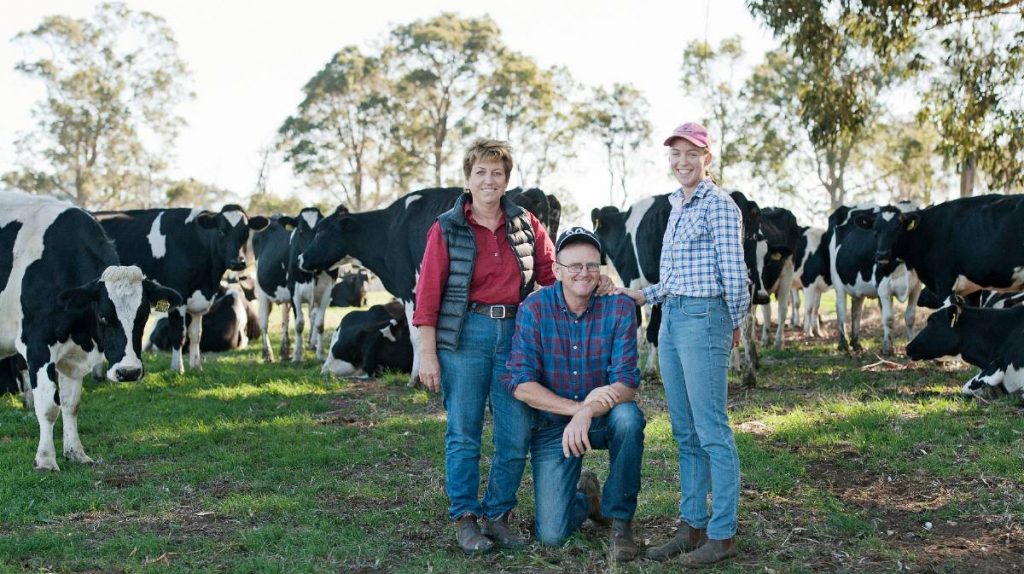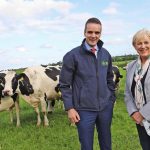
“We keep a lot of records, but that’s only so we can look at them and make decisions,” Mrs Biddulph said. “From paddock performance, the number of hay rolls coming out (of each paddock), to seed selection, we do financial analysis of the business every year, so with breeding, it is not much different.
“We like to keep our herd genetically modern, using new bulls all the time rather than older bulls. We are completely commercially focused: our money comes from selling milk and we want cattle that last.”
So, it is no surprise that the couple have embraced Australian Breeding Values for females, based on genomic testing, pedigree estimates and their own performance records.
“We have a report on our herd, every cow from milking to non-milking,” Mrs Biddulph said. “Some calves were born on the 8th of April and on the 17th of April we got their pedigree only BPI.”
The Balanced Performance Index (BPI) is an estimate of an animal’s genetic merit, based on the traits that contribute to farm business performance under Australian conditions.
The couple milk 420-registered Holsteins at Cowaramup near Margaret River in Western Australia off about 300 hectares with the support of a 125ha run-off block and 50ha of leased land.
Targeted, individual matings underpin the Biddulphs’ breeding program, a task which relies heavily on data.
“We’ve always focused on strong cow families, three generations of type and udders and now we use cow BPIs as well,” Mrs Biddulph said. “All the information is there now and more importantly it is readily available. “I’ve reared bulls from maiden heifers now that we have got more information. Before their dams even hit the dairy, we know a fair-bit about them.
“We then genomically test our home-bred bulls to confirm they are good enough. This early information puts us in front compared to where we used to be.”
Constantly pushing for genetic gain, earlier information has helped the couple sharpen their focus for culling and export heifer selection.
Inseminating all the heifers and running an extensive artificial insemination program with the main herd ensures the couple has plenty of replacements each year. Their annual replacement rate is 25-30 per cent, with young animals keeping herd health issues to a minimum. These extra heifers also mean there’s more available to send to the export market. Traditionally 30-50 animals are exported each year.
Profitability is at the heart of all business decisions, including breeding.
Thorough analysis of sires starts as soon as DataGene’s April ABV proofs are released, with bulls selected within 24 hours. This tight timeframe’s crucial to ensure semen arrives in Western Australia in time for joining.
DataGene’s Good Bulls Guide is a starting point for sire selection with the BPI the primary source of information. “That’s the first cut and then we look for bulls with a positive fat percentage, cell count and fertility,” Mrs Biddulph said.
There was always a focus on udders, rumps and feet and legs as well to ensure functionality and in the end a consistent team of bulls was chosen including a mix of genomically tested, progeny test and proven bulls.
A strong believer in the science behind the BPI system, Mrs Biddulph said progeny-test bulls were always a good option as they had high genetic merit.
She said the focus on BPI has delivered accurate results in the paddock and on paper.
“At the end of every year we separate all the first-calf heifers by bull and look at their average production,” she said.
“The poorer production ones always have the lowest BPIs.”
Averaging about 550 kilograms/cow/lactation, the 600kg Holsteins are fed a diet of pasture for the short (180-day) growing season, supplemented by concentrates and silage. Bale feed is about 2.5 tonnes/cow/lactation as there’s no pasture available after November.
“For us, it is all about bringing in consistent lines of heifers that perform for us in a variety of ways, they produce milk, are quiet, have decent udders, easy to milk on a rotary, get in calf, are able to walk to the back of the farm 1.5 kilometres away and back again and are as efficient as possible converting feed to milk.
“We get all this information out of ABVs and BPIs now, on the cow sides as well as bulls’ side. We used to only have cow pedigree information to rely on, now we have genomic information that tells us stuff that’s real.”

























